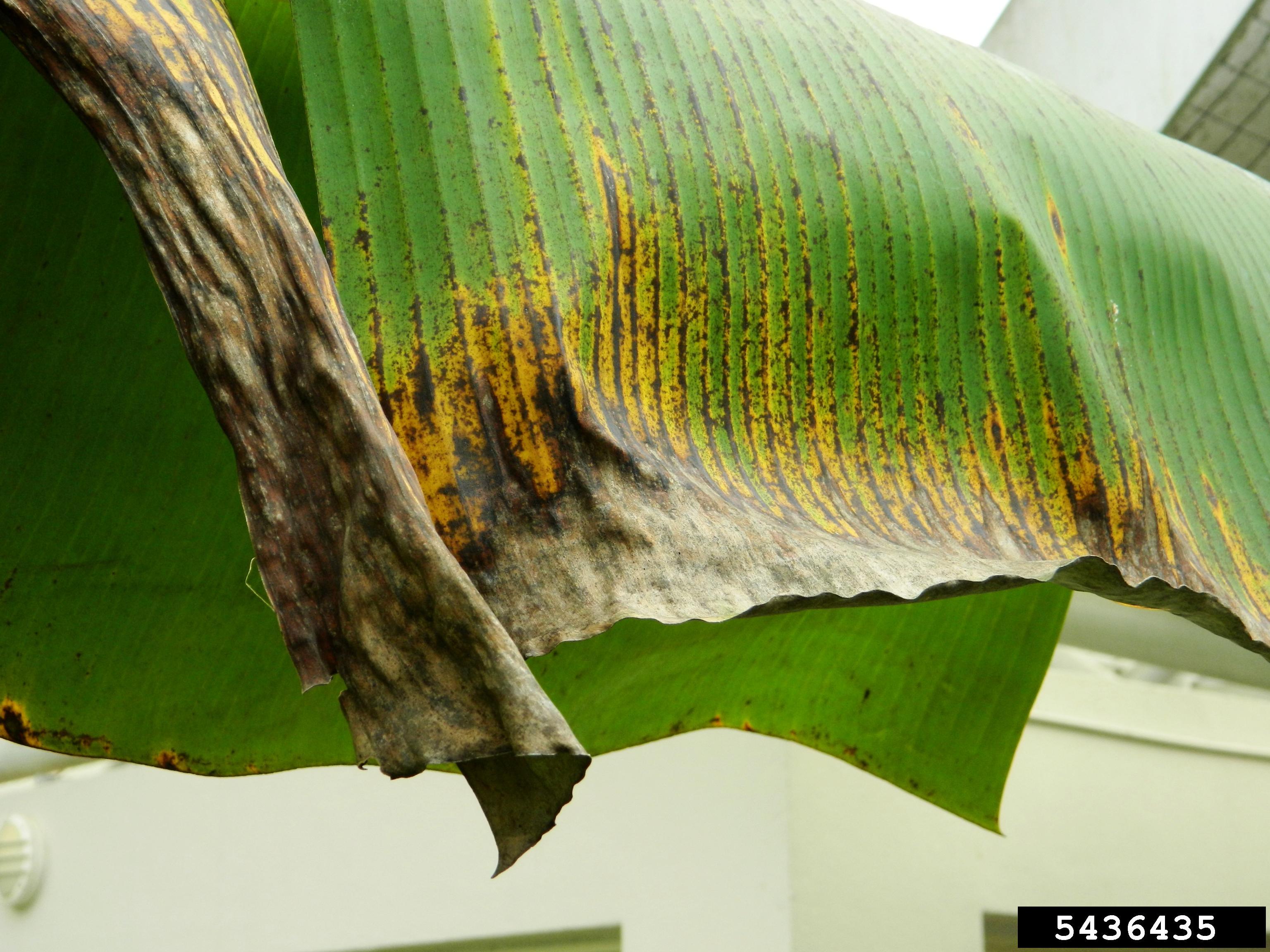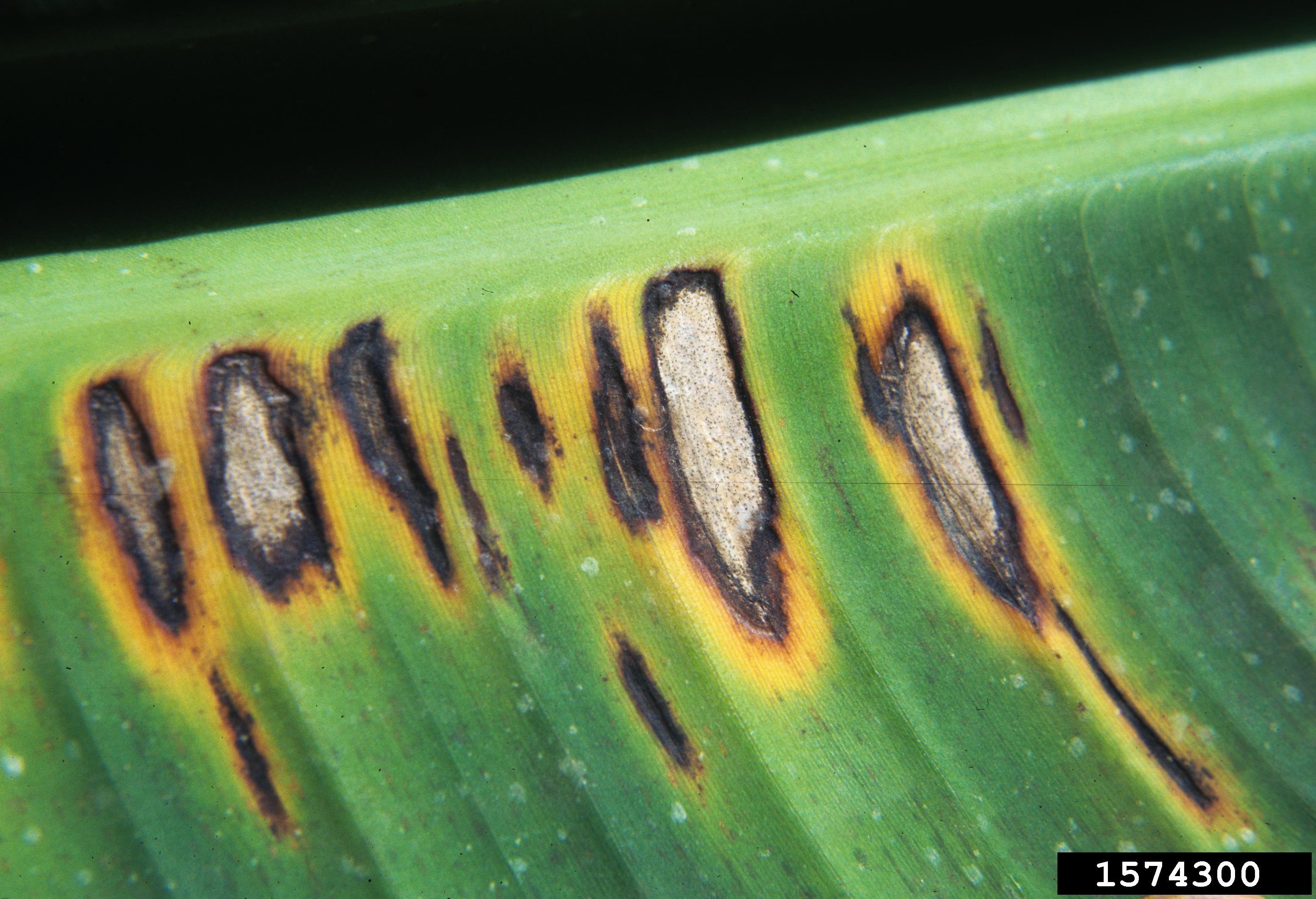
Black sigatoka
| Primefact number | Edition | Published | Author |
|---|---|---|---|
| 1250 | First | Oct 2013 | Plant Biosecurity and Product Integrity |


Black sigatoka (Mycosphaerella fijiensis) is an exotic plant pest. This fungal disease is a serious threat to Australia’s banana industry.
Black sigatoka is also known as black leaf streak (Figure 1). Disease symptoms are caused by the fungus Mycosphaerella fijiensis.
Leaf symptoms of black sigatoka are very similar to those produced by yellow sigatoka (present in Australia) and eumusae leaf spot (not present in Australia).
Laboratory testing is required to reliably distinguish these pests.
Notifiable status
Black sigatoka (Mycosphaerella fijiensis) is a notifiable plant pest/disease in NSW.
All notifiable plant pests and diseases must be reported within 1 working day. You can report notifiable plant pests and diseases by one of the following methods:
- Call the Exotic Plant Pest Hotline 1800 084 881
- Email biosecurity@dpi.nsw.gov.au with a clear photo and your contact details
- Complete an online form
A full list of notifiable plant pests and diseases can be found in Schedule 2 of the NSW Biosecurity Act 2015.
Description
Black sigatoka causes large necrotic lesions on the leaves of the banana plant (Figure 2) and leaves drop and collapse. Leaf death results in reduced yield and uneven ripening of fruit.
There are six recognised stages in symptom development.
Stage 1 – initial speck stage
Tiny specks less than 0.25 mm appear on the underside of the leaf surface. These specks are white to yellowish in colour and quickly turn a reddish brown.
Stage 2 – initial streak stage
Initial specks elongate and widen becoming streaks which are also small (2mm by less than 1 mm). At this stage the streaks are more visible on the underside of the banana leaf than on the top surface of the banana leaf.
Stage 3 – second streak stage
The initial streaks continue to expand in size and change colour from the reddish brown to a very dark brown almost black colour.
Where infection is heavy the streaks may overlap which gives infected leaves a black appearance.
Stage 4 – first spot stage
The streaks continue to enlarge and become rounded in shape. They turn brown and a water-soaked border may develop around the edges of the infection. Spots occur on the top surface of the banana leaf.
Stage 5 – second spot stage
The middle of the spot becomes slightly depressed. The water soaked border may develop a yellow halo around it. When infection is heavy large areas of leaf tissue break down.
Stage 6 – third spot stage
The centre of each spot dries out and changes colour to a pale grey or beige. Sexual and asexual fungal spores develop in the dead tissue. A distinctive black border surrounds each spot. Banana leaves die and the spots remain visible on the dead and dried out leaves.
Host range
The six stages of symptom expression of black sigatoka have been recorded on cultivated banana (Musa), plantain (Musa paraduisaca), wild banana (Musa acuminate) and subspecies bantesii and zebrina.
Spread
Long distance spread occurs through the movement of infected plant material including leaves, nursery stock and fruit.
Short distance spread occurs as the fungal spores are dispersed from infected banana plants and debris by wind and rain-splash.
Distribution
Black sigatoka has been recorded in 72 countries in Central and South America, Oceania, South East Asia and parts of Africa.
Black sigatoka was found in the banana production area at Tully, North Queensland in April 2001 and an emergency response occurred. Black sigatoka was not found in the affected area after November 2001 and the incursion was declared eradicated in October 2005.
Black sigatoka was detected on several Torres Strait islands between Australia and Papua New Guinea and on the northern tip of Cape York Peninsula in 1981. Black sigatoka disease is regarded as having a restricted distribution in the Torres Strait and remains under official control.
Strict quarantine controls prevent movement of banana plants and fruit from the Torres Strait.
Actions to minimise risks
Put in place biosecurity best practice actions to prevent entry, establishment and spread of pests and diseases:
- practice “Come clean, Go clean”
- ensure all staff and visitors are instructed in and adhere to your business management hygiene requirements
- source propagation material of a known high health status from reputable suppliers
- monitor your banana crop regularly
- keep records
- isolate banana plants or areas where suspect symptoms are observed

